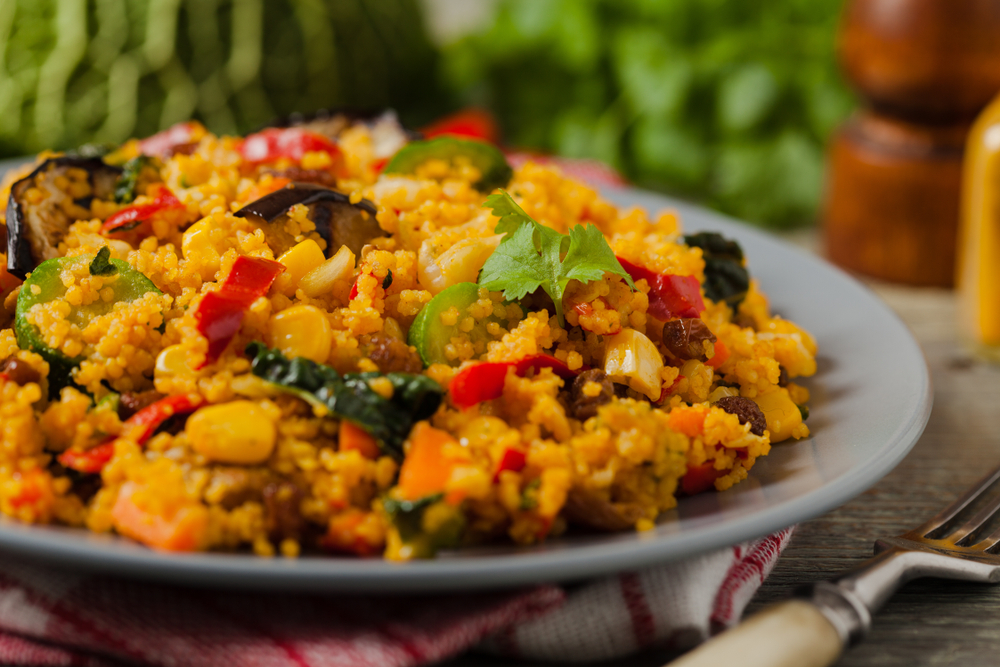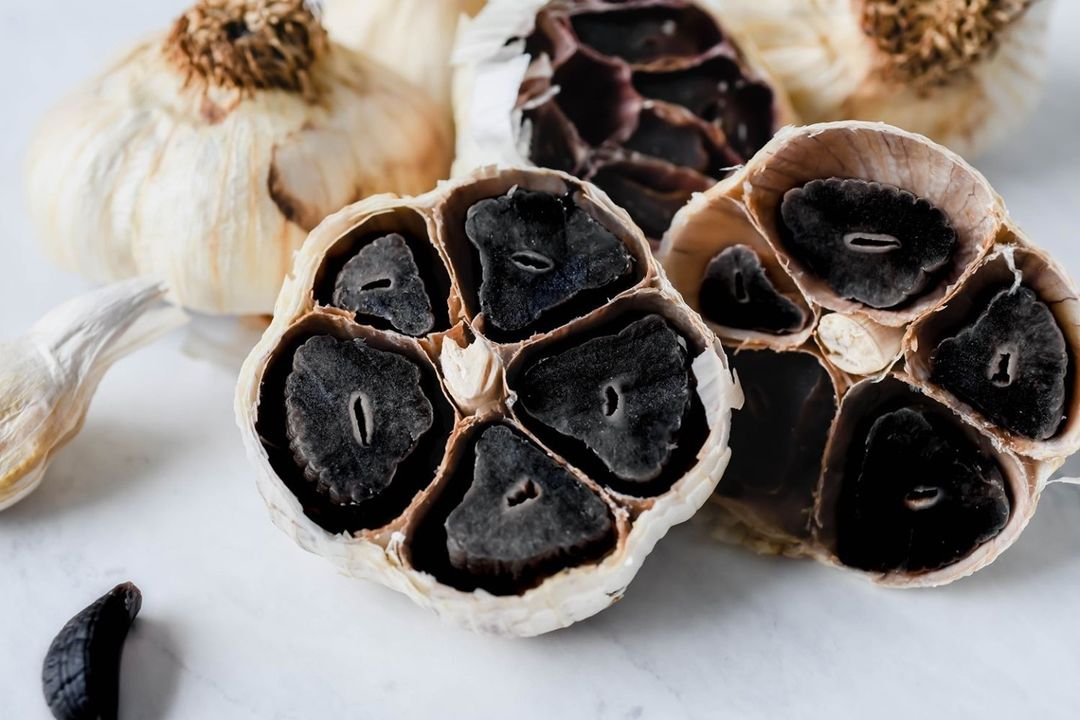
How to Prepare Couscous?
Couscous, that unusual tiny pasta originating from North Africa, is becoming increasingly popular in our region.
Although it’s not part of traditional Balkan cuisine, this versatile side dish is winning over gourmets with its simple preparation method and exceptional nutritional value. But how do you prepare perfect couscous? Is it really as easy as many claim? Why should we include it in our diet at all?
What is Couscous Actually?
Couscous is neither rice nor pasta in the classical sense—it actually consists of tiny granules made from semolina, a type of coarsely ground durum wheat flour. Historically, couscous originates from North Africa, and its name comes from a Berber word meaning "well rolled" or "well formed," describing the traditional method of preparation.
For centuries, it was a staple food of the people of the Maghreb region—which includes Morocco, Algeria, Tunisia, and Libya. Due to French influence in these countries, couscous made its way to France as early as the 17th century and gradually spread across the European continent. In North African countries, couscous is often served on Fridays as part of a family meal with almost ceremonial significance - writes N1.
Nutritional Value of Couscous
Before we move on to preparation, it's important to understand why couscous is a valuable addition to our diet. This food has an impressive nutritional profile:
One portion of couscous (about 100 grams) contains approximately 175 calories, making it a lighter alternative to pasta or rice. It’s rich in the B-complex vitamins, especially thiamine, niacin, vitamin B6, and folic acid, which are crucial for energy metabolism and nervous system health.
Couscous is also extremely rich in minerals, especially selenium and potassium. A cup of cooked couscous provides about 40% of daily potassium needs and up to 60% of selenium needs, a powerful antioxidant that helps fight free radicals and boosts immunity.
Unlike white rice, couscous contains a significant amount of dietary fiber, meaning it keeps you full longer and helps regulate blood sugar levels. This makes it ideal for people watching their weight or managing diabetes.
Modern Way of Preparing Couscous
Today, instant couscous is most commonly available on the market—it’s pre-steamed and dried, which significantly shortens cooking time. This version is far from the traditional preparation method but is perfect for the fast-paced modern lifestyle.
Basic recipe for preparing instant couscous:
Measure the couscous into a deep bowl (one cup of couscous is enough for 2–3 servings as a side dish).
Add salt to taste and a little olive oil for better flavor.
Heat water or broth to boiling. The ideal ratio is one part couscous to one and a half parts liquid.
Pour the hot liquid over the couscous, stir quickly, immediately cover, and let it sit for 5–7 minutes.
Once the couscous absorbs all the liquid, fluff the grains with a fork or your fingers (once cooled enough). This step is crucial for achieving a fluffy texture.
Here’s a little secret from professional chefs: before serving, add a bit of butter or olive oil and stir gently—this will make the couscous incredibly creamy and tasty.
Traditional Couscous Preparation
Although today’s instant couscous is convenient, the traditional preparation is fascinating and requires special skills and time.
Originally, couscous was made by hand, rubbing semolina with water in large wooden bowls. This process would take hours, during which tiny granules were gradually formed. The grains would then be sifted, and those too large would be reprocessed.
Cooking traditional couscous requires a special pot—the couscoussier—which has two parts: the bottom, where meat and vegetables are placed in water or broth, and the top with a perforated bottom where couscous is placed. Steam from the bottom part slowly cooks the couscous while it simultaneously absorbs the aroma of the meat and vegetables.
This process can take up to an hour, with occasional stirring and breaking up of lumps. When the grains are light and easily separated, the couscous is perfectly cooked.
Couscous Variations
It’s nice to know that this dish can be tailored to your tastes and needs:
Spiced couscous – Add cumin, coriander, cinnamon, cardamom, or a spice mix like ras el hanout for an authentic North African flavor.
Couscous with vegetables – Mix cooked couscous with sautéed vegetables like bell peppers, zucchini, carrots, and onions for a nutritionally complete meal.
Sweet couscous – Yes, couscous can be a dessert! Prepare it with milk instead of water, add honey or brown sugar, cinnamon, dried fruits like raisins or apricots, and some chopped nuts or almonds. This is especially popular with children in the Maghreb countries.
Couscous salad – A perfect summer option. Mix cooled couscous with fresh cucumber, tomato, parsley, mint, olive oil, and lemon juice. You can also add feta cheese for a Mediterranean touch.
How to Serve Couscous?
In North Africa, couscous is traditionally served in a large communal bowl, surrounded by meat and vegetables, and eaten with the hands, shaping small bites. In the Western world, however, couscous is usually served as a side dish with meat or fish, similar to rice.
The ideal combination is with Mediterranean dishes—roasted or stewed lamb, chicken with olives, or any dish with a flavorful, aromatic sauce that the couscous can absorb.
Additionally, couscous is great for takeaway meals, as it holds up well and is easily reheated—just add a bit of water and warm it up briefly.
Couscous for Special Dietary Needs
This versatile food can be adapted to various dietary regimes:
For vegetarians or vegans, couscous prepared with vegetable broth and combined with legumes like chickpeas or lentils makes a complete protein meal.
People with digestive issues, especially those with “lazy intestines,” may benefit from the fiber in couscous, especially when combined with fiber-rich vegetables.
However, it’s important to note that couscous contains gluten, so it is not suitable for people with celiac disease or gluten sensitivity. Alternatives such as quinoa or millet can provide similar results in meals.
Did You Know?
In North African countries, the skill of preparing perfect couscous was traditionally passed from mother to daughter and considered an important social skill. In some parts of Morocco, the quality of couscous a woman could prepare was even once considered an important factor in choosing a bride.
Why Is Couscous a Popular Dish?
The speed of preparation and versatility make couscous an increasingly popular ingredient in modern kitchens. Unlike rice, which takes 15–20 minutes to cook, or pasta that must be boiled and drained, couscous is ready in just five minutes, making it ideal for quick meals.
Moreover, its neutral base makes it the perfect “canvas” for various flavors—from spicy, Mediterranean, and Middle Eastern, to sweet and fruity combinations.
For those watching calorie intake, couscous is a smarter choice than many other side dishes. One portion (about 100g) contains fewer calories than the same amount of rice or pasta, especially due to its lower fat content.
This ancient food from North Africa has stood the test of time and geographic boundaries, becoming a favorite around the world. Its easy preparation, exceptional nutritional profile, and incredible versatility make it an ideal addition to the modern kitchen repertoire.
Whether you prepare it as a side dish, a main course, or even dessert, couscous gives you the opportunity for creative culinary expression. Its neutral base absorbs the flavors it’s combined with, making it perfect for experimenting with various spices, vegetables, and proteins.
Let your imagination run wild and discover all the possibilities couscous offers—from a quick weekday lunch to an impressive dish for guests. With this exceptional food, you simply can’t go wrong.





